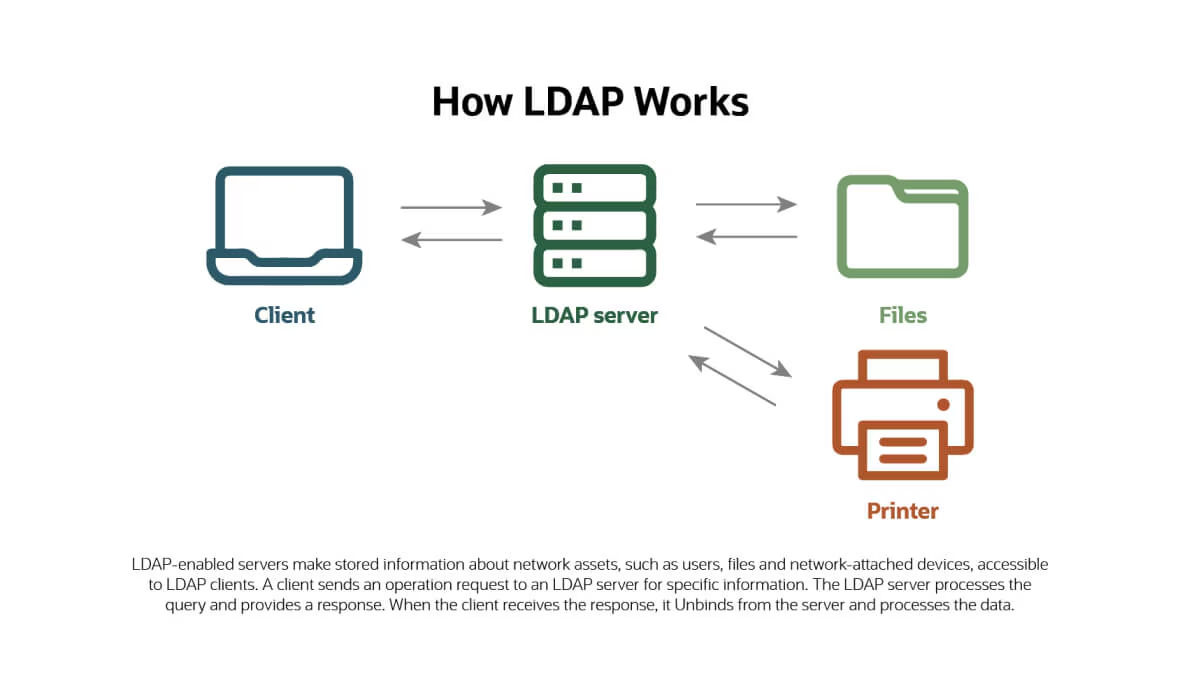Understanding LDAP: The Backbone of Directory Services
 Cloud Tuned
Cloud Tuned
Understanding LDAP: The Backbone of Directory Services
In the realm of network security and user management, the Lightweight Directory Access Protocol (LDAP) stands out as a fundamental technology. LDAP is crucial for organizing and accessing directory information, enabling efficient and secure management of user credentials and resources. This article delves into what LDAP is, its key features, benefits, and its role in modern IT infrastructure.
What is LDAP?
LDAP, or Lightweight Directory Access Protocol, is an open, vendor-neutral application protocol used to access and manage directory information services over a network. Directories store information about users, devices, and other entities, making it easier to manage and secure access to network resources. Developed in the early 1990s, LDAP has become a standard for directory services, widely adopted in various IT environments.
Key Features
1. Hierarchical Structure
LDAP directories use a hierarchical, tree-like structure to organize data. This structure, known as the Directory Information Tree (DIT), allows for efficient data retrieval and management. Entities are organized in a parent-child relationship, facilitating easy navigation and administration.
2. Schema Flexibility
LDAP directories are highly flexible in terms of schema. The schema defines the types of data that can be stored in the directory and the relationships between them. This flexibility allows LDAP to be customized to meet the specific needs of an organization.
3. Authentication and Authorization
LDAP supports robust authentication and authorization mechanisms. It can store user credentials and provide authentication services, ensuring that only authorized users can access network resources. LDAP can also be integrated with other authentication protocols, such as Kerberos, to enhance security.
4. Scalability
LDAP is designed to be highly scalable, capable of handling a large number of entries and supporting distributed directory services. This scalability makes it suitable for both small organizations and large enterprises with extensive user bases.
5. Interoperability
As an open standard, LDAP is interoperable with various systems and platforms. It can be integrated with different operating systems, applications, and services, making it a versatile solution for directory management.
Benefits of Using LDAP
Centralized Management
LDAP provides a centralized repository for storing and managing user information and credentials. This centralization simplifies administrative tasks, reduces redundancy, and ensures consistency across the organization.
Enhanced Security
By consolidating user credentials and providing secure authentication mechanisms, LDAP enhances network security. It ensures that sensitive information is protected and that access to resources is tightly controlled.
Improved Efficiency
LDAP's hierarchical structure and efficient query capabilities improve data retrieval and management efficiency. Administrators can quickly locate and update information, streamlining user and resource management processes.
Cost-Effectiveness
As an open protocol, LDAP can be implemented using free and open-source software solutions, reducing the overall cost of directory services. Additionally, its scalability means that organizations can start small and expand their directory services as needed without incurring significant additional costs.
Integration Capabilities
LDAP's interoperability allows it to be integrated with a wide range of applications and services. This integration capability ensures that LDAP can serve as a backbone for various IT systems, providing a cohesive and unified approach to directory management.
Conclusion
LDAP is a cornerstone technology in the field of directory services, providing a robust, scalable, and secure solution for managing user credentials and network resources. Its hierarchical structure, schema flexibility, and interoperability make it an essential tool for modern IT environments. By leveraging LDAP, organizations can achieve centralized management, enhanced security, and improved efficiency in their network operations.
If you found this article informative and want to stay updated with more content on directory services and network security, please leave a comment below and subscribe to our blog newsletter. We look forward to engaging with you and sharing more valuable insights!
Feel free to share your thoughts and subscribe for more articles like this. Your feedback and engagement help us deliver content that matters to you. Thank you for reading!
Subscribe to my newsletter
Read articles from Cloud Tuned directly inside your inbox. Subscribe to the newsletter, and don't miss out.
Written by
